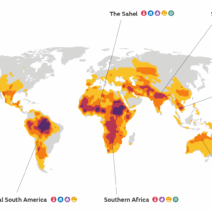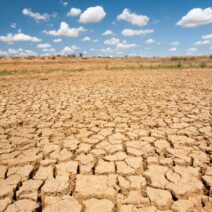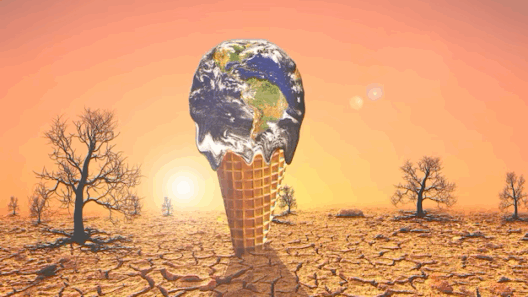In recent years, the notion that planting trees can act as a panacea for global warming has gained considerable traction. Trees, with their ability to absorb carbon dioxide, indeed play a vital role in the carbon cycle. However, while their importance is undeniable, the simplistic view that reforestation alone can halt climate change warrants examination. This analysis explores the multifaceted relationship between afforestation efforts and their actual impact on mitigating global warming.
Firstly, understanding the ecophysiology of trees is essential. Trees sequester carbon dioxide through photosynthesis, depositing carbon in both their biomass and the soil. As they grow, they act as a buffer, intercepting greenhouse gases from the atmosphere. However, the scale of this absorption depends significantly on various factors including tree species, age, health, and growth conditions. Fast-growing species may offer quicker carbon sequestration, but the ultimate goal should be sustainability. It is crucial to plant native species that are suitable for local ecosystems, as non-native trees can disrupt existing biodiversity and ecological balance.
Moreover, while planting trees is vital, it is imperative to recognize that they are not a silver bullet. The amount of carbon dioxide a single tree can absorb over its lifetime is limited. According to research, an average tree absorbs about 22 kilograms of carbon dioxide per year. When scaled, this may seem significant; however, by global standards, the amount falls drastically short of what is required to offset carbon emissions that reach billions of tons annually. Thus, tree planting must be part of a broader strategy that includes reducing fossil fuel consumption, enhancing energy efficiency, and transitioning to renewable energy sources.
Furthermore, not all tree planting initiatives yield positive outcomes. Incorrectly managed reforestation projects can lead to adverse effects. For instance, monoculture plantations—where a single species is planted over extensive areas—can result in diminished habitat quality and increased vulnerability to pests and diseases. Additionally, these plantations can inadvertently contribute to soil degradation if not managed properly. The environmental impact of digging and planting, if not accounted for, can overshadow the benefits of tree planting. Therefore, thoughtful planning and management frameworks are crucial to safeguard these initiatives against unintended consequences.
Turning our attention to climate resilience, trees offer more than just carbon sequestration. They provide critical ecosystem services such as moisture retention, soil stabilization, and habitat creation for countless species. Urban areas, particularly, benefit from the shade and cooling effects of trees, which can significantly lower urban heat islands and reduce energy consumption for air conditioning. Thus, planting trees can furnish immediate local benefits, albeit these do not directly correlate with carbon offsets. This showcases the interconnectedness of environmental health and climate action, emphasizing the necessity of a holistic approach.
In the context of promoting climate justice, tree planting initiatives must also address social dimensions. Often, large-scale planting projects overlook the rights and knowledge of indigenous and local communities who are stewards of the land. Engaging with these stakeholders ensures that tree planting does not just become an act of environmentalism devoid of social context. Collaboration can lead to culturally relevant practices that respect indigenous ways of life while enhancing forest cover. Disempowering local populations only exacerbates existing inequalities and undermines efforts to combat climate change.
A significant debate exists surrounding the concept of “tropical deforestation versus afforestation.” This discourse highlights that halting deforestation activities is as crucial as planting new trees. The Amazon rainforest, for example, is a vast repository of biodiversity and serves a significant role in global carbon cycling. If deforestation continues at its current rate, any efforts made on afforestation elsewhere will not suffice to balance the equation. This reveals the necessity for policies that reflect holistic strategies encompassing both conservation and reforestation.
The technological advancements in carbon accounting and forestry practices also play an essential role in maximizing the impact of tree planting. Strategies such as agroforestry—where trees are integrated into agricultural systems—can enhance carbon storage while simultaneously improving productivity for farmers. Digital tools monitoring growth rates, health conditions, and ecosystem impacts provide critical data that can inform future plantings and conservation initiatives. Yet, these strategies must remain grounded in community engagement to be effective.
Finally, the ramifications of climate change extend beyond carbon. It influences precipitation patterns, alters biodiversity, and modifies ecosystems’ health. Consequently, a singular focus on tree planting for carbon offsets may risk overlooking these interconnected challenges. Climate change mitigation requires a portfolio of strategies, integrating tree planting with a suite of approaches like sustainable agriculture, renewable energy expansion, and responsible consumption practices.
In conclusion, while planting trees is a vital component of climate change mitigation, it cannot singularly halt global warming. The effectiveness of afforestation is contingent upon appropriate species selection, sustained management, and integration with broader environmental policies. Climate action necessitates a multifaceted approach that embraces conservation, restoration, and carbon reduction strategies. By understanding and respecting the complex interplay of natural systems, society can foster healthier ecosystems, mitigate climate change, and move toward a more sustainable future.







